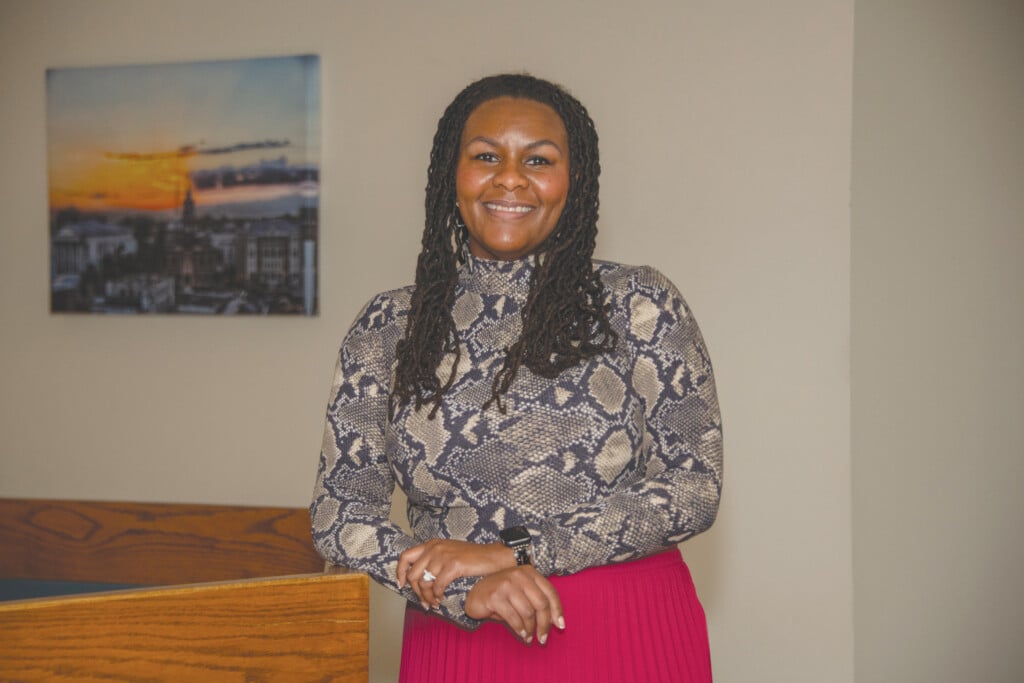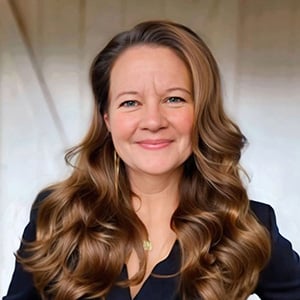Holistic Dentistry
Whole-body health from the dental chair
YULIA PATERSON, owner of Link Dental Health, offers patients more than traditional dental work. As a holistic dentist, Paterson sees dentistry as a means to help patients improve their overall health, and she provides a range of protocols and services to help them on their health journey.
“I am a healer and an educator,” Paterson says. “As a holistic dentist, my approach is to look at the whole body and connect oral health to the rest of the body. I don’t treat the mouth as a separate entity.”
Paterson’s journey into holistic dentistry began when she grew frustrated with conventional dentistry’s limitations. A doctor of dental surgery, Paterson had practiced traditional dentistry for seventeen years in New York City and Wilmington. However, over time she found that she wanted to do more for patients than treat their symptoms – as she said, to “repair, drill, fix, prescribe medication, and repeat.”
“I felt I was doing the same thing over and over again and not actually helping my patients get better,” she says. “I became very unfulfilled and frustrated that I wasn’t equipped to help patients get better.”
Determined to find a better way to treat her patients, Paterson stopped practicing to pursue additional education. She became board certified in integrative medicine and dentistry as well as naturopathy, and she earned certifications in a range of additional alternative and natural therapies.
Now, Paterson offers patients an extensive choice of treatment options: traditional and alternative dentistry; restorative treatments (crowns, implants, veneers, bridges, for example); orthodontia; nutritional assessment and counseling; pre- and postnatal oral care; heath coaching; and sleep medicine.
While Paterson treats urgent issues, such as a chipped or broken tooth or a tooth that needs extraction, immediately with traditional dentistry, her regular patient care bears little resemblance to that of a conventional dentist.
In her two-hour examinations, Paterson gathers extensive information about her patients, including their dental and physical medical histories, sleep habits, oral home care, lifestyle, and goals.
As a holistic dentist, my approach is to look at the whole body and connect oral health to the rest of the body. I don’t treat the mouth as a separate entity.
Such information gathering is essential to get to the root of a patient’s health, she says. By sitting back, listening, and learning, she discovers what issues are negatively impacting her patients’ dental and physical health.
“If a patient has diabetes, he will often have gum inflammation and bone loss,” Paterson says. “If a patient isn’t absorbing and assimilating nutrients, he may have a leaky gut and will not have the pillars to build health. … Even stress can affect a patient’s oral health.”
Paterson also uses 3D dental scans of her patient’s mouth, head, and neck to assess her patients oral health. These images give dentists extremely clear pictures, which means dentists have accurate measurements that ensure correctly fitting crowns and implants. These images can also reveal other problems such as an infection in the jaw.
 “I see patients who have silent infections they don’t know about,” Paterson says. “I then determine if the infection is localized or spreading throughout the patient’s body.”
“I see patients who have silent infections they don’t know about,” Paterson says. “I then determine if the infection is localized or spreading throughout the patient’s body.”
Paterson added that research shows that more than seventy systemic diseases are linked to oral bacterial infections.
Paterson’s exams enable her to determine how best to treat her patients’ oral and general health. For example, a patient may benefit from supplements to strengthen enamel; nutritional counseling to prevent tooth decay or improve diabetes; or instruction on how to clear their airways to improve sleep, she says.
If Paterson’s examination reveals a possible disease, she refers the patient to a specialist. In some cases, she collaborates with the patient’s doctors and can become part of his or her medical team.
She also focuses on the materials she uses for procedures. For instance, she fills cavities with composite resin instead of dental amalgam.
“I try to minimize the use of toxins and metals, anything that is known to be a neurotoxin like microplastics and BPAs,” Paterson says. “I honor my patients, and I want what I put in their bodies to be the cleanest version available and the best in the market today.”
Since Paterson opened Link Dental Health in February, she has garnered a steady clientele – with patients traveling from five different states to see her. Paterson attributes her success to the growing demand for alternative dentistry.
“There are a lot of people looking for this kind of care,” Paterson says. “I am so honored and grateful there is a need I can fulfill in this community.” W



